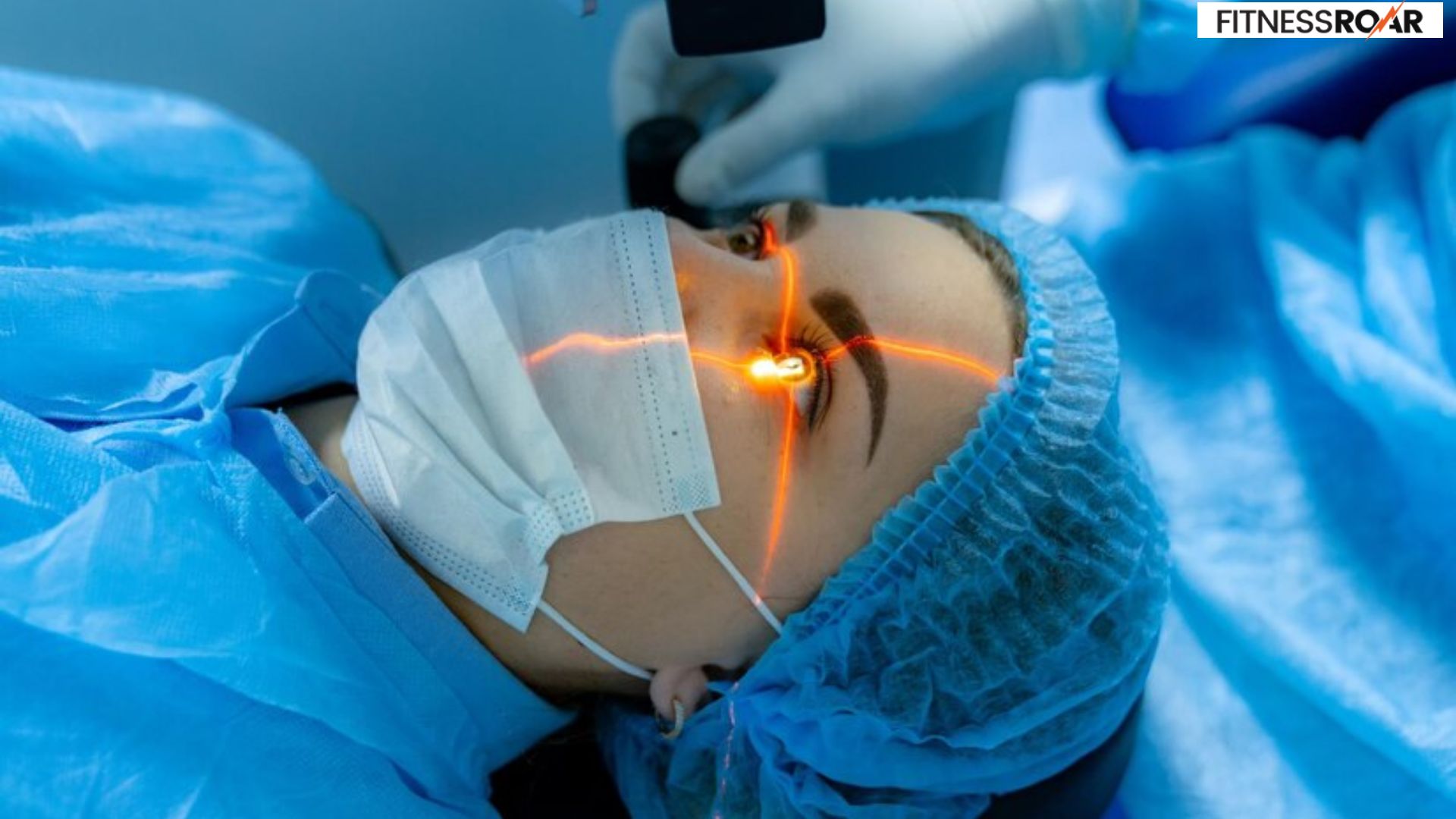Why Heart Rate During Exercise Increases?

Your heart is the engine that keeps you going, and during exercise, it works even harder to deliver oxygen-rich blood throughout your body. But have you ever wondered how fast your heart should be beating while you exercise? Understanding your heart rate is crucial for maximizing your workout benefits and staying safe.
This blog will delve into the importance of heart rate during exercise. We’ll explore different reasons why people might be interested in this topic, addressing various search intents:
- Those new to exercise: We’ll explain what heart rate is and how to measure it during a workout.
- Fitness enthusiasts: We’ll discuss the concept of target heart rate zones and how to use them to achieve specific fitness goals.
- People with health concerns: We’ll address how heart rate monitoring can help ensure a safe exercise experience for those with pre-existing conditions.
By the end of this blog, you’ll be equipped with the knowledge to listen to your heart and get the most out of your exercise routine!
Also Read: Yoga Asanas for Relieving Stress
Understanding Heart Rate Increase During Exercise
As you ramp up your exercise routine, you might notice your heart pounding faster. This isn’t your imagination! Your heart rate increases during exercise due to several physiological mechanisms:
Increased Oxygen Demand: When you exercise, your muscles require more oxygen to produce energy. Your heart responds by pumping faster to deliver oxygen-rich blood throughout your body at a quicker rate.
Elevated Carbon Dioxide Levels: Exercise also leads to the production of carbon dioxide, a waste product of cellular respiration. The increased CO2 levels in the blood signal your body to increase heart rate and respiration to remove it efficiently.
Factors Influencing Heart Rate During Exercise
Several factors can influence your heart rate during exercise, including:
- Fitness Level: Generally, a fitter individual will have a lower resting heart rate and a slower increase during exercise compared to someone who is less active.
- Age: As we age, our maximum heart rate naturally decreases.
- Genetics: Some people are simply predisposed to having higher or lower heart rates.
- Hydration Status: Dehydration can lead to a higher heart rate as your body struggles to pump thicker blood.
- Environment: Hot and humid conditions can put additional strain on your heart, causing it to beat faster.
Correlation Between Exercise Intensity and Heart Rate
There’s a direct correlation between the intensity of your workout and your heart rate. As your exercise intensity increases, your heart rate will also rise proportionally. This makes heart rate a valuable tool for gauging your effort level during exercise.
Impact of Different Exercise Types
The type of exercise you choose can also influence your heart rate response. Generally, activities that engage large muscle groups, like running or cycling, will cause a more significant heart rate increase compared to exercises that primarily use smaller muscle groups, like bicep curls.
Understanding these concepts lays the groundwork for exploring target heart rate zones and how to use them to achieve your fitness goals in the next section!
Aldo Read: Best Exercises for Toned Arms
Monitoring Heart Rate During Exercise
Now that you understand why and how your heart rate increases during exercise, let’s explore how to monitor it effectively.
There are several ways to measure and monitor your heart rate during exercise:
Manual Pulse Check: This is the simplest method. Stop momentarily during your workout, find your pulse on your wrist or neck with your fingertips, and count the beats for 10 seconds. Multiply that number by 6 to estimate your beats per minute (bpm).
Heart Rate Monitor Watches: Many fitness trackers and watches incorporate heart rate monitoring technology. These devices provide real-time feedback on your heart rate throughout your workout.
Cardio Equipment Sensors: Treadmills, stationary bikes, and other cardio machines often have built-in sensors that detect your heart rate through handgrips or chest straps.
Importance of Accurate Heart Rate Monitoring
Monitoring your heart rate accurately helps you:
- Stay in Your Target Heart Rate Zone (discussed in the next section) to optimize your workout for specific goals.
- Recognize Overexertion: If your heart rate spikes too high, it might be a sign you need to slow down to avoid straining yourself.
- Track Progress: Monitoring heart rate changes over time can indicate improvements in your cardiovascular fitness.
Here’s how to leverage heart rate monitoring to elevate your workouts:
Strategies for Integration
- Set Heart Rate Targets: Use your age to estimate your maximum heart rate (plenty of online calculators can help). Then, calculate your target heart rate zone based on your fitness goals (weight loss, endurance, etc.). Aim to keep your heart rate within this zone during exercise.
- Interval Training: Alternate between high-intensity bursts that elevate your heart rate and recovery periods to bring it back down. This keeps your workout dynamic and challenges your cardiovascular system.
Tips for Optimizing Exercise Intensity
- New to Exercise?: Start with low-intensity activities and gradually increase effort as your fitness improves.
- Experienced Exercisers: Push yourself by gradually increasing your exercise intensity to reach higher points within your target heart rate zone.
- Listen to Your Body: While heart rate is a valuable tool, pay attention to how you feel. If you experience dizziness, chest pain, or shortness of breath, slow down or stop altogether.
By incorporating heart rate monitoring into your routine, you can make informed decisions about your exercise intensity, ensuring safe and effective workouts!
Also Read: Must Eat Raw Garlic
Managing Heart Rate During Exercise
Now you’ve got the tools to monitor your heart rate, but how do you use that information to ensure a safe and effective workout?
Understanding Safe Heart Rate Zones
One of the most valuable applications of heart rate monitoring is using target heart rate zones. These zones represent ranges of heart rate that correspond to different exercise intensities and fitness goals. A common method estimates your maximum heart rate by subtracting your age from 220 (although more precise methods exist). Then, you can calculate percentages of your maximum heart rate to define your target zones:
- Active Recovery (50-60%): Light activity for warm-up, cool-down, or recovery days.
- Fat Burning (60-70%): Encourages your body to use fat for energy.
- Cardio (70-80%): Improves cardiovascular fitness and endurance.
- Anaerobic (80-90%): High-intensity training for building power and speed (use with caution).
- Maximum Effort (90-100%): Reserved for short bursts during intense workouts (experienced athletes only).
Precautions for Individuals with Health Conditions
People with pre-existing health conditions, especially heart disease, should consult a doctor before starting any new exercise program. They may need to adjust target heart rate zones or have specific limitations based on their condition.
Signs of Excessive Heart Rate
While pushing yourself is beneficial, there are signs that your heart rate might be too high:
- Dizziness or lightheadedness
- Chest pain or tightness
- Difficulty breathing at rest
- Palpitations (irregular heartbeat)
- Excessive fatigue after exercise
Steps to Take if Heart Rate Exceeds Safe Levels
If you experience any of these signs, stop exercising immediately and rest. If symptoms persist, seek medical attention. Here are some additional tips:
- Cool Down: Sit or stand still and allow your heart rate to gradually decrease.
- Hydrate: Drink plenty of water to replenish fluids.
- Monitor Your Heart Rate: If symptoms recur, consult a doctor to assess your exercise program and heart health.
Remember, listening to your body is key. Heart rate monitoring is a valuable tool, but it should be used in conjunction with how you feel to ensure a safe and enjoyable workout experience.
Also Read: Secret Tips to Burn Fat Effectively
Maximizing Athletic Performance
For athletes looking to take their training to the next level, heart rate monitoring becomes a powerful tool for optimizing performance.
Benefits of Monitoring and Managing Heart Rate for Athletes
Athletes can leverage heart rate data to:
- Train Smarter, Not Harder: By targeting specific heart rate zones, athletes can ensure they’re working at the right intensity to achieve their goals, whether it’s building endurance, increasing power, or improving recovery.
- Prevent Overtraining: Overtraining can lead to injuries and plateaus. Monitoring heart rate helps athletes avoid pushing themselves too hard and allows for proper recovery periods.
- Track Progress: By monitoring heart rate changes over time, athletes can gauge their fitness improvements and adjust their training accordingly.
Strategies for Optimizing Performance Using Heart Rate Data
Here are some strategies for athletes to leverage heart rate data:
- Heart Rate Variability (HRV) Training: HRV measures the variation between heartbeats, reflecting your nervous system’s adaptability. Training at specific HRV zones can enhance recovery and overall performance.
- Lactate Threshold Training: The lactate threshold is the point where exercise intensity creates a rapid increase in blood lactate levels. Training just below this threshold (using heart rate data) improves endurance.
- Interval Training with Heart Rate Control: By alternating high-intensity intervals with recovery periods based on target heart rate zones, athletes can maximize cardiovascular gains and improve performance.
Calculating Target Heart Rate Zones for Optimal Performance
The previously mentioned method of subtracting your age from 220 to estimate maximum heart rate can be a starting point. However, for athletes, more precise methods like VO2 max tests may be used. Once you have your estimated maximum heart rate, you can calculate personalized target heart rate zones for various training goals:
- Endurance Training: (70-80% of MHR) This zone improves your body’s ability to use oxygen efficiently, crucial for long-distance events.
- Tempo Training: (80-85% of MHR) Sustaining this pace strengthens your aerobic system and lactate threshold, enhancing race pace.
- Interval Training: (85-90% of MHR for high-intensity intervals, with recovery periods at lower zones) This builds power and speed for explosive efforts during competition.
Tailoring Workouts Based on Individual Fitness Goals and Capabilities
Athletes should tailor their workouts based on their individual fitness level and goals. A seasoned marathoner will have different target heart rate zones compared to a sprinter. Consulting a certified trainer or coach can help athletes personalize their training plans using heart rate data for optimal results.
By incorporating these strategies, athletes can transform heart rate monitoring from a simple metric into a powerful tool for maximizing training efficiency and achieving peak performance.
Also Read: Health Benefits of Zumba
In Crux
This blog has explored the fascinating world of heart rate during exercise.
Remember, your heart rate is a valuable tool that can guide you towards a safe, effective, and enjoyable exercise experience. Whether you’re just starting out or a seasoned athlete, incorporating heart rate monitoring into your routine can unlock a new level of fitness and performance. So, lace up your shoes, grab your heart rate monitor, and get ready to crush your workout goals!












